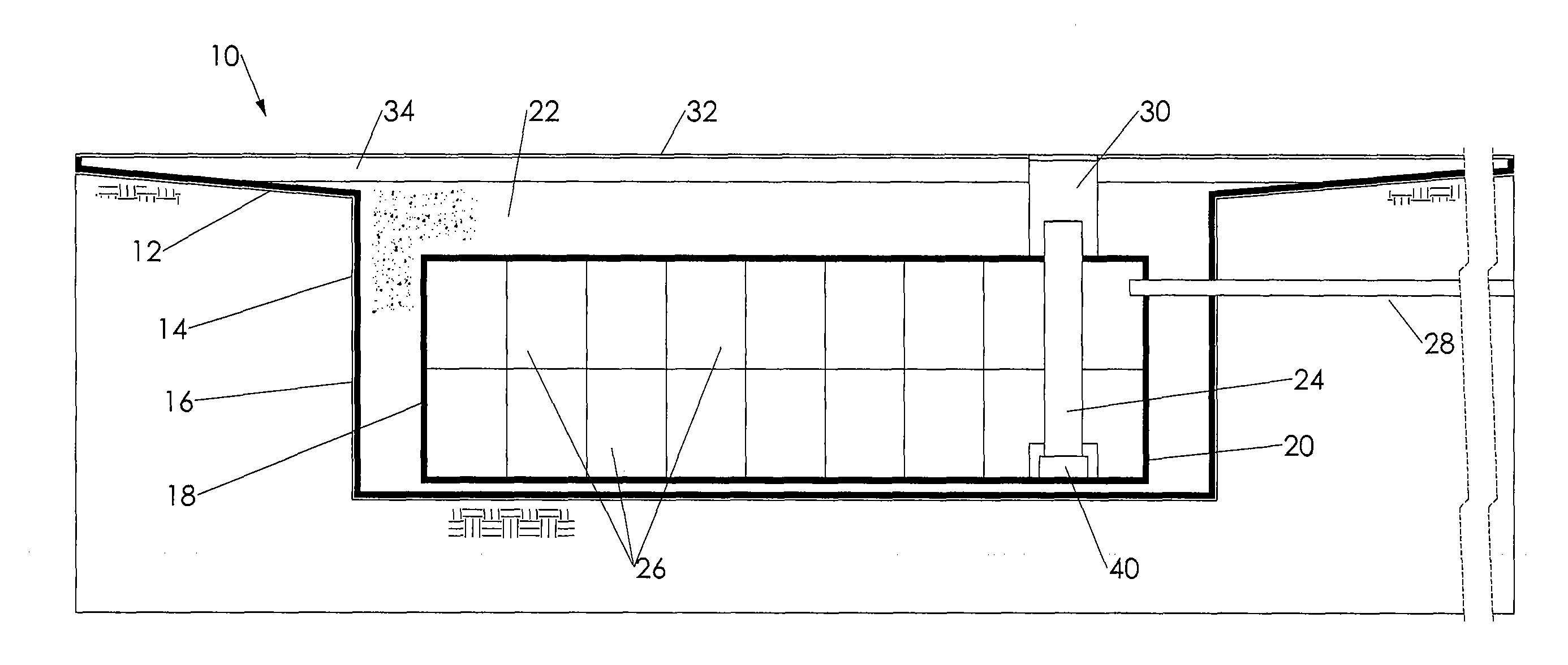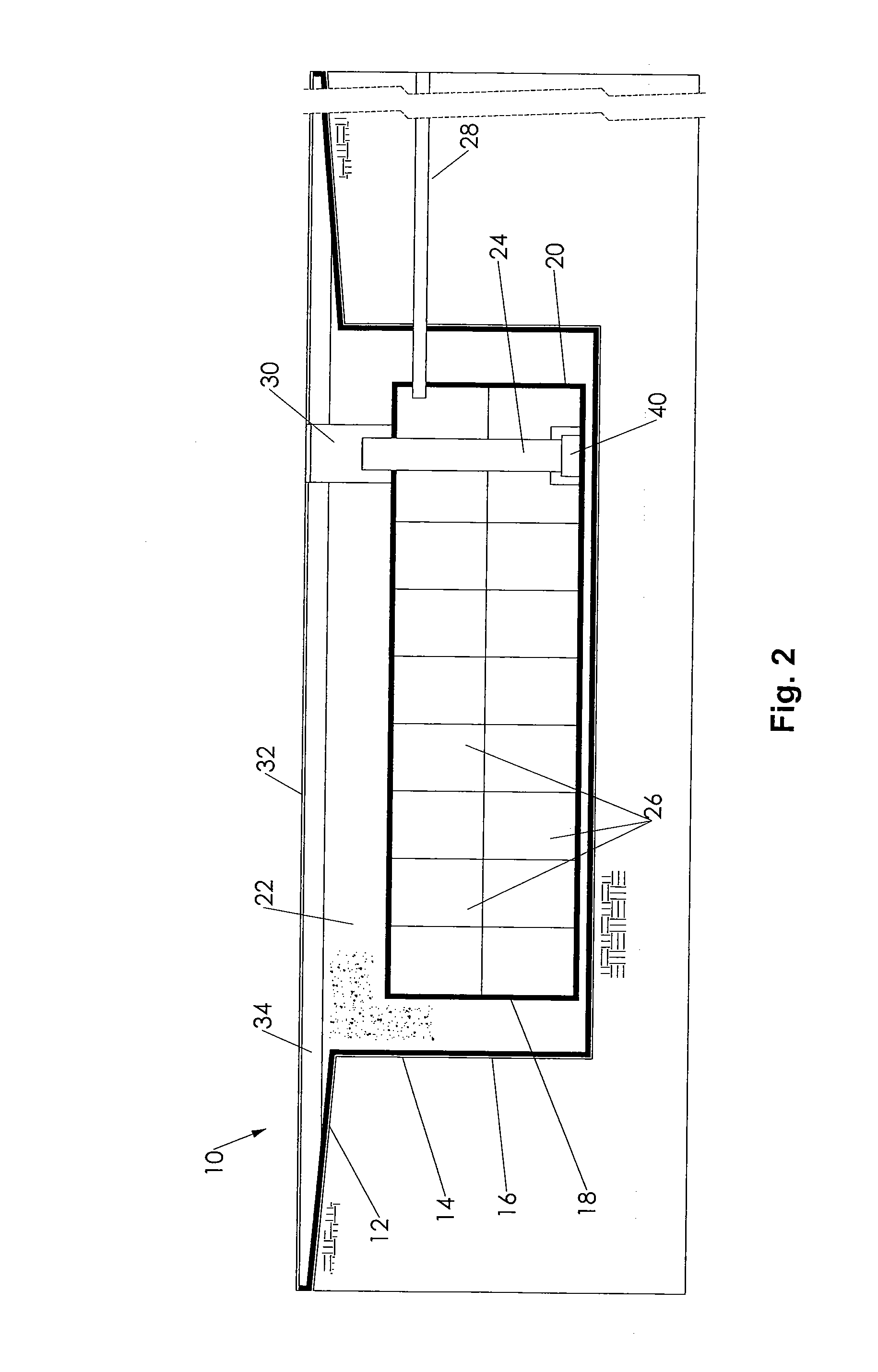Water drainage and harvesting system for an artificial turf environment
a technology of artificial turf and rainwater harvesting system, which is applied in the direction of water cleaning, rail anchors, and ways, can solve the problems of inability to maintain natural grass, inconvenient use, and difficulty in maintaining natural grass, so as to minimize water loss, efficient rainwater harvesting system, and minimize water contamination
- Summary
- Abstract
- Description
- Claims
- Application Information
AI Technical Summary
Benefits of technology
Problems solved by technology
Method used
Image
Examples
first embodiment
[0023]The water storage tank 18 is a load bearing structure that forms a void space for water storage. Although a prefabricated tank could be used, each of the preferred tank embodiments of the invention are constructed on site. The embodiments of the invention provide a more economical solution than prefabricated tanks. In a first embodiment, the water tank 18 comprises a prefabricated subunit structure 26 preferably at or near the bottom of the reservoir 14 as shown in FIG. 2. The subunit structure 26 can be constructed by assembling pre-molded plastic boxes on-site. Recycled plastic boxes made up of supporting cross beams have good load bearing capacity and create over 95% void space in which to store water. This is the preferred method of tank construction for the invention because of its ability to be constructed to any capacity with minimal excavation. It is also the embodiment that creates the largest percentage of void space by volume. There are multiple manufacturers of the...
second embodiment
[0030]FIG. 3 illustrates the invention in which the water storage tank 18 comprises one or more culvert sections 36. The culvert sections 36 preferably comprise pre-formed corrugated metal or concrete pipes placed at or near the bottom of the reservoir 14. Culvert sections 36 are preferably perforated to improve water flow into the hollow interior 38. Crushed stone 27, gravel and / or other permeable backfill material may be placed over and between sections 36. The remaining components of the water storage system are the same as described above.
third embodiment
[0031]FIG. 4 shows the invention in which the water storage tank 18 comprises a stone bed 42 having a significant void space for retention and storage of the collected water. Stone bed 42 may comprise plural layers of stone 27 or crushed rock. The bed preferable is covered with geotextile fabric to prevent the gravel and sand backfill, which has a smaller particle size, from migrating into the stone bed. Water travels through the remaining layers of the system as described above.
PUM
 Login to View More
Login to View More Abstract
Description
Claims
Application Information
 Login to View More
Login to View More - R&D
- Intellectual Property
- Life Sciences
- Materials
- Tech Scout
- Unparalleled Data Quality
- Higher Quality Content
- 60% Fewer Hallucinations
Browse by: Latest US Patents, China's latest patents, Technical Efficacy Thesaurus, Application Domain, Technology Topic, Popular Technical Reports.
© 2025 PatSnap. All rights reserved.Legal|Privacy policy|Modern Slavery Act Transparency Statement|Sitemap|About US| Contact US: help@patsnap.com



